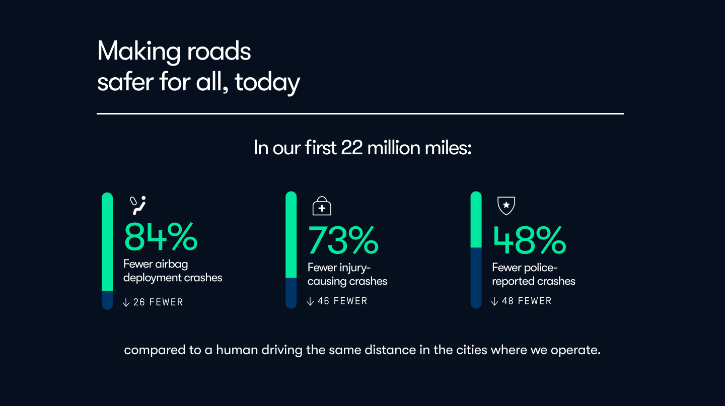Waymo, owned by Google’s parent company, Alphabet, has launched a new data hub that compares Waymo’s crash rates with those of humans. The hub will be regularly updated to provide transparency of the company’s operations.
Waymo operates in Phoenix, San Francisco, Los Angeles and Austin. The hub hosts data with methodologies that contrast autonomous and human driving performance. It also complies with industry best practices, such as the recently introduced RAVE (Retrospective Automated Vehicle Evaluation) checklist for safety evaluation, according to the company.
Latest data from Waymo claims that during 22 million miles driven through the end of June, it has been involved in 84% fewer crashes with airbag deployment, 73% fewer injury-causing crashes and 48% fewer police-reported crashes compared with human drivers.
This is the first time the airbag deployment metric has been included in Waymo’s crash rate analysis, providing deeper context for crashes. Waymo also provides local data for San Francisco and Phoenix, cities with millions of miles covered, for better comparison with human benchmarks.
Waymo has made it easy for researchers to replicate and verify the analysis from the hub. As more miles are logged, and NHTSA SGO reports are released, the data is updated on the hub.
Waymo claims that numerous factors influence its strong safety record, including the absence of drunk/drowsy/distracted driving and respect for road rules. Coupled with advanced detection and collision avoidance capabilities, this results in rapid response to potential hazards.
Waymo’s safety framework also plays a crucial part in improving safety. The framework supports multiple methodologies across hardware, behavior and operations that each provide a different, complementary part of the answer, coming together to create a tool that is more informative than its individual components.
With the new hub, Waymo hopes to provide riders, communities, government officials and researchers with insights into the impact of Waymo’s driving on safety.


